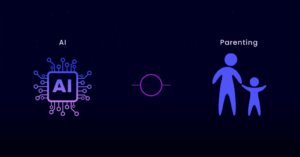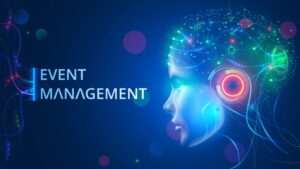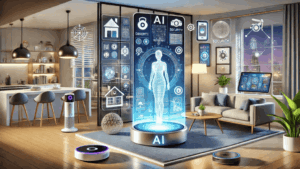What if there were an intersection where the lights changed in anticipation of the incoming traffic, where patrol officers were stationed before crimes occurred, or where energy was saved automatically? It might sound absurd, but coverage AI can allow regions to function optimally—and, quite literally, think for themselves. AI is improving efficiency for strategic metropolitan infrastructure, such as smart traffic lights and sophisticated crime prediction algorithms. While some individuals are beginning to embrace this concept, numerous densely populated areas worldwide have already begun to implement it. AI is transforming inefficient frameworks into more effective ones by improving comprehension of the analyzed data, which leads to improved safety measurement across neighborhoods. It’s similar to bestowing metropolitan areas with a form of autonomous cognitive functions.
We will address all frequently asked questions regarding smart cities powered by AI, such as operational mechanisms, implications on safety, and whether real changes can be made on an individual daily basis. The goal of this piece is to explain how AI is not only revolutionizing our cities but also our entire perception of urban life.
AI and the Evolution of Urban Infrastructure:
Smart cities do not emerge spontaneously. They are the product of decades of effort toward better technological integration within cities. But it is AI that transforms raw data into actionable decisions in real time. Nowadays, AI is managing traffic, checking air quality, optimizing water consumption, and even planning new developments. It identifies trends, predicts outcomes, and suggests actions using millions of data points—an effort no human team could achieve at scale.
For example, Singapore and Amsterdam are some of the few cities whose urban planning is supported by AI evaluating population growth, construction activities, and environmental data. Imagine having an AI city planner that works 24/7.
Predictive Policing and Crime Prevention:
This is a phenomenal development. AI aids law enforcement agencies in anticipating the location and timing of crimes. Sounds crazy? It’s happening. Using historical crime data, algorithms work in conjunction with weather and local event data to assist police departments in resource allocation to forecasted hot spots, just like they do in Los Angeles and Chicago.
But it’s not merely about anticipating crimes—it’s about preventing them as well. AI-powered cameras can analyze peculiar actions and inform law enforcement officials prior to the occurrence of any crime. Privacy concerns may be legitimate, but the focus remains on ensuring public safety while respecting ethical limits.
AI in Traffic Management:
Have you ever wondered, “There must be a better way,” when faced with traffic jams? Well, AI does as well. AI smart traffic lights can change their operation in real-time depending on the volume of traffic, thus reducing the time waited and emissions produced.
Barcelona and London have incorporated the use of AI to analyze traffic volumes, adjust signals, and even aid drivers in avoiding busy roads. The programmable syncopation yields shorter commuting times, decreased fuel consumption, and more satisfied drivers. AI can also improve the design of some intersections by spotting and patterning where accidents commonly occur and thus making them safer.
Smart Surveillance and Public Safety:
Grainy CCTV footage played hours later is utter nonsense. AI-powered surveillance is capable of identifying suspicious activities while they are happening. AI can monitor airports and concerts using facial recognition, object tracking, and motion detection to pinpoint potential dangers within highly populated regions.
The technology doesn’t just provide footage; it interprets the situation at hand, like giving security cameras the ability to think. For instance, in Dubai, smart surveillance systems are able to recognize people’s faces almost instantly, notifying the police of individuals of interest immediately.
Disaster and Emergency Services Response:
The value of AI technologies is most noticeable in crises. When a disaster strikes, the promptness of assistance is crucial. AI assists first responders by anticipating what areas of a particular location are likely to require the most help, as well as mapping out evacuation routes, scheduling emergency vehicles, and handling the most crucial cases first.
Consider California, for one. Firefighters can be more prompt and tactical by using AI models to forecast the rate of wildfire spread. AI-equipped drones also aid in rescue missions by surveying perilous venues that are unapproachable by humans.
Sustainability and Energy Management:
AI improves safety in smart cities and enhances their environmental friendliness. Smart cities monitor and optimize patterns, resulting in reduced AI consumption. Smart cities utilize AI and initiate powerful energy management systems that improve efficiency through balancing supply and demand.
AI monitors real-time power consumption and adjusts electricity distribution in overseas neighborhoods designed as cities, such as Tokyo. Saving money is not the only benefit gained; environmentally friendly solutions can also be implemented, promoting sustainable living in urban areas.
Sanitation Management and Waste:
AI is improving how cities manage their waste. Sanitation crews receive alerts notifying them when smart bins are full. AI navigation systems also ensure fuel-efficient routes for garbage trucks.
San Francisco has taken the lead in utilizing AI to examine recycling trends and encourage improved recycling practices. This results in cleaner streets, fewer missed pickups, and a reduced environmental impact. That’s a win-win.
Water preserves this resource, especially in expanding cities. AI assists in monitoring for leaks, pressure variations, and contamination. Japanese and South African systems utilize AI to identify potential pipe failures before they escalate.
Transportation Systems Efficiency Boost:
AI assists us with moving more optimally when it comes to public buses, subways, and trains. From predicting delays to real-time demand scheduling, AI handles the smooth operation of systems.
Seoul and New York are cities that have adopted AI to study and analyze ridership patterns, adjust intervals, and improve overall transport systems’ efficacy. Public transport transforms from a major inconvenience into a wise option.
AI-Driven City Development:
As with anything else, building a city is not easy, but AI can assist in making it a list. Urban designers now harness the possibilities provided by AI to model city development, change zoning rules, and examine the effects of new infrastructure projects, both economically and spatially. The optimized usage of space, financial resources, and budgets is the key here.
This plan isn’t just for today’s needs; it’s safeguarding everything for what’s to come.
AI Applied in Healthcare and Public Welfare:
Air quality monitoring or hospital traffic management—AI does a commendable job at maintaining public health. The first step in AI pandemic prevention is already happening, where the technology is used to detect disease outbreaks by tracking symptom searches on the web and ER visit data.
During the COVID-19 pandemic, local policymakers were able to act more rapidly and effectively by harnessing AI to anticipate infection hotspots. Today, scientists are using this technology to predict seasonal flu spikes, pollution-related illnesses, and various other illnesses.
Use of AI in Engagement and Opinion Analysis:
AI is helping cities look deeper at public requirements. Chatbots and emotion capture tools skim internal emails, social media posts, and other surveys for public sentiment. AAI systems increase the responsiveness of city officials.
This process ensures that every citizen gets a voice, and someone is hearing them.
AI and Environmental Monitoring:
AI-enabled technology measures the world around us, collecting air quality, temperature, and noise pollution almost instantaneously. AI enables the identification of areas that require intervention, such as the need for additional greenery or adjustments to traffic movement.
Take Paris, for instance. They rely on AI for pollution control and proactive intervention on days forecasted to have heavy emissions. The use of AI is more proactive compared to traditional monitoring.
Smart Lighting and City Infrastructure:
Imagine streetlights that adjust their brightness based on pedestrian traffic. Does that sound like science fiction? That’s AI in action! Such systems are beneficial in conserving energy as well as improving visibility where and when it is most required.
Emergency response situations now use AI-powered smart streetlights to guide ambulances or police to the scene more quickly. The infrastructure lights the way.
Cybersecurity in Smart Cities:
We must protect every bit of information. AI is able to provide real-time threat detection and response, defend user data, and attack simulations, making it the digital guardian of smart cities. A multi-layered approach provides protection.
AI technology has been proven to be highly adaptive and sophisticated against fast-evolving cybercriminals. By making use of patterns, AI systems can detect threats before they can have devastating impacts.
Conclusion:
Whether we see it or not, artificial intelligence is gradually transforming the contours of our cities. It influences how we live, work, and move through urban space. The cities of tomorrow will be smart, empathetic, responsive, and data-rich. The best part is that these changes aren’t just in futuristic cities like Tokyo and Dubai. They are happening globally, one smart enhancement at a time. Human creativity combined with machine intelligence is changing the built environment to better serve people.
At a rapid pace, what we once considered only a possibility is becoming a reality.
FAQs:
1. Is AI safe to use in cities?
Indeed, responsible implementation makes this possible. Most cities follow strict ethical regulations that require AI systems to be fair, safe, and respectful of privacy.
2. Can AI help reduce crime rates?
Absolutely. Predictive policing and smart surveillance systems are assisting law enforcement agencies in preventing crimes before they occur.
3. How does AI save energy in cities?
AI carefully scrutinizes energy consumption data to optimize the operation of floodlights, heaters, and air conditioners, thereby minimizing waste and enhancing efficiency.
4. Do smart cities only apply to large, technologically advanced urban areas?
That isn’t the case at all. Even smaller towns have begun employing AI for tasks such as waste disposal and traffic management. Its usage is scalable and customizable.
5. What is the primary obstacle to the implementation of AI technology in smart cities?
It is crucial to strike a balance between innovation and privacy. Cities need to make sure that data collected through AI is secure and handled responsibly.




